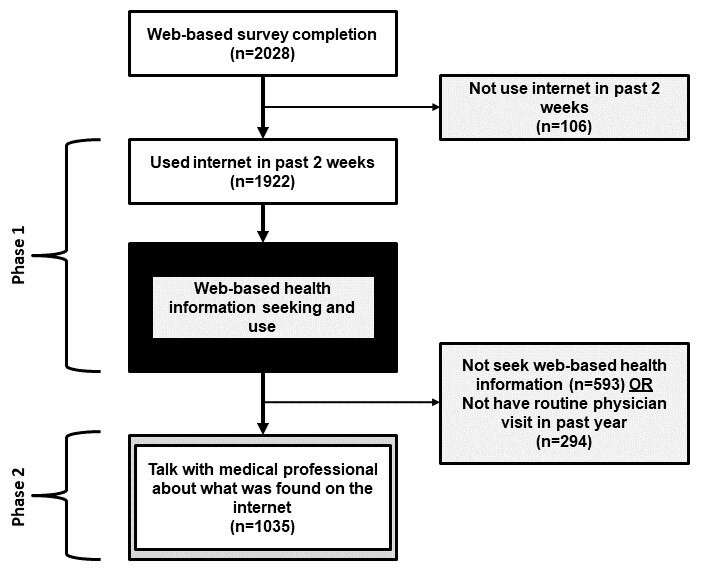
In a recent study, a multidisciplinary team of Texas A&M University researchers identified reasons why men seek health information online. The study specifically looked at middle-aged and older African American and Hispanic men living with one or more chronic conditions.
While previous research has identified disparities in seeking web-based health information, few studies have explored the correlation between web-based health information seeking based on factors such as race, gender, age and the presence of chronic health conditions.
Ledric Sherman, assistant professor in the Department of Health and Kinesiology at the Texas A&M University College of Education & Human Development, along with colleagues Matthew Lee Smith, co-director of the Center for Population Health and Aging and Kirby Goidel, political science professor in the College of Liberal Arts, along with Caroline Bergeron of Employment and Social Development Canada, recently published their findings in the Journal of Medical Internet Research.
“Despite the prevalence of chronic conditions such as diabetes and cardiovascular disease among middle-aged and older populations, utilization of preventive health services remains low,” Sherman said. “This is especially true among males, who traditionally underutilize clinical and community-based health resources. However, little is still known about the reasons why men underutilize health services, and this is the main reason for conducting this study.”
Using an online survey questionnaire for data collection, the researchers identified 2,028 men who met the inclusion criteria including demographics, health-related behaviors, availability of resources for managing care, and technology use and credibility. However, 106 were omitted from the study based on not having used the internet in the previous two weeks.
The study was conducted in two phases. In phase one, participants were asked about their two-week internet usage and if their information seeking was about a “specific disease or medical problem” or “a certain medical treatment or procedure.”
To be included in the second phase, participants had to respond “yes” to the information-seeking variables in phase one, in addition to reporting having had a routine healthcare visit with a physician in the past year. Phase two asked participants if they shared this online information with their healthcare provider.
In phase one, the average age of the 1,922 participants who reported having used the internet in the past two weeks was 56.63, with about 1,221 participants being African American and 801 being Hispanic. Of these men, more than half were partnered or married (51.87 percent) and a majority had at least some college (79.92 percent) and had seen a healthcare physician in the past year (84.65 percent). In addition, these men reported having an average of close to four chronic conditions (3.93) and taking a little more than three daily medications (3.39). More than half (57.7 percent) of the men reported having received support in improving and managing their health and chronic conditions, with 17.43 percent reporting they had attended programs or classes to help manage their chronic conditions.
Researchers found that on average, the men who sought health information online were younger, had more people living with them in their households, had multiple chronic conditions, and reported more healthcare frustrations and barriers to self-care.
“These findings suggest that African American and Hispanic men with more complex disease profiles and those who are dissatisfied with their current and past interactions with healthcare and healthcare providers are more likely to seek information, recommendations and solutions about their health conditions online,” said Smith. “This suggests a proactive approach to health information seeking, which may be driven by their urgent necessity to meet health needs and obtain practical support.”
Furthermore, the participants who reported using multiple sources of technology when seeking online health information found the online information to be more reliable.
“Online information seeking can help inform the interactions African American and Hispanic men have with their medical providers and improve the overall quality of their healthcare,” Goidel said. “Even so, there are disparities in terms of who, among these populations, seeks out information and then uses that information in subsequent conversations with their doctors.”
Sherman added that there can be barriers to seeking health information online.
“The first barrier would be any information that is not from a credible source such as the Centers for Disease Control and Prevention, American Heart Association, National Institute of Health, etc. The second would be websites that have incorrect, outdated or biased information listed,” Sherman said. “A third is frustration or anxiety due to not being able to find the information that one is seeking. However, nothing beats personalized advice and treatment from a doctor or healthcare provider, so, when possible, that should always be the first point of contact.”
In the second phase of the study, researchers found that of the 1,035 men who discussed their internet findings with their physician in the past year, those who looked up information only about specific diseases on the web were less likely to discuss what they found with their healthcare provider. In addition, Hispanic men who had attended health management programs for their chronic diseases were more likely to discuss online findings with their healthcare provider.
“This suggests that men with comorbidities and complicated health needs who recognize their struggles with self-care may be more inclined to seek help using online information and interactions with healthcare providers,” Smith said. “This highlights that men need multiple sources of information and support to overcome obstacles and better self-manage their conditions.”
Sherman added that online information-seeking serves as a means of education for these men.
Source: Read Full Article
